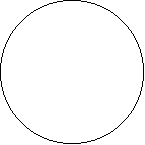|
Lunar Observations Chart
|

|
|---|
Instructions: To complete this step of your pin requirements, you must make eight observations of the moon during the next "moonth", or lunar cycle of approximately 29 days. You should try to make about two observations a week, weather permitting. Remember, the Moon is orbiting the Earth, so sometimes it is in the daytime sky rather than the night sky. Pick regular observation days or nights, such as every Monday and Thursday, or whichever two days of the week are best for you. Of course, if you really enjoy this activity, you are welcome to make an observation for every day of the "moonth"! Don't forget to show your chart to your leader when you finish!
|
Date and Time |
Draw your Observation |
Name of Phase
|
 |
||
 |
||
 |
|
Date and Time |
Draw your Observation |
Name of Phase
|
 |
||
 |
||
 |
||
 |
||
 |
|
||||||||||||||||||||

